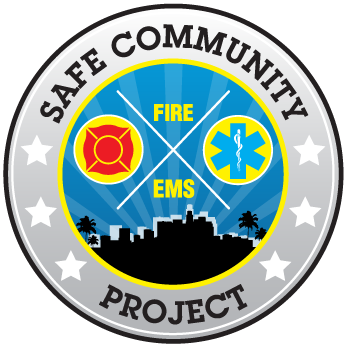Would you know what to do if a loved one collapsed suddenly in front of you? CPR can be the difference between life and death. You can’t assume that someone else will step in – that’s why it’s so important to learn CPR. And, when dealing with Cardiac Arrest, the issue isn’t always obvious heart disease. Electrical malfunctions of the heart muscle can create any number of life threatening events, including Cardiac Arrest.
1. CPR Saves Lives
More than 300,000 people have cardiac arrests in the United States every year. Sudden cardiac arrest occurs when an electrical rhythm problem occurs and the heart is no longer able to pump blood effectively to the rest of the body. You might see a person suddenly collapse, lose consciousness, and stop breathing. The longer the body goes without circulation, the lower the chance of survival. By performing CPR, you are able to help the person’s blood keep circulating until an ambulance arrives and more advanced tools can be used. We know that the chance of surviving a sudden cardiac arrest increases significantly, by more than double, when CPR is started early.
2. CPR is Not Performed Enough
National statistics have shown that only 15 to 30 percent of people who experience sudden cardiac arrests outside of hospitals receive bystander CPR. When people are asked why they would not give CPR, a very common answer is that they never received training. Other concerns, such as doing harm to the person, doing harm to oneself, legal risks, or concerns about infection, often diminish once people learn proper CPR techniques.
3. You Don’t Have to Do Mouth-to-Mouth Resuscitation
Another reason people report they do not perform CPR is because of concerns performing mouth-to-mouth resuscitation. In 2010 the guidelines for performing CPR were changed. For non first responders, doing something is better than doing nothing, and that’s why learning to use your hands-only is so important.
Hands-only CPR has been shown to be just as effective in keeping blood and residual oxygen flowing to the brain of a cardiac arrest patient as traditional CPR techniques.
4. Hands-Only CPR is Easy to Learn
To perform hands-only CPR, place the heel of your hand on the center of the victim’s chest. Take your other hand and place it on top of the first, interlacing your fingers. Press down on the chest about two inches and release. You want to repeat this quickly, at least 100 times a minute. And don’t stop doing CPR until emergency services arrives at the scene – recent studies have found that people may have a better chance of surviving with normal brain function when CPR is continued up to 38 minutes or longer. There are many places to find online videos, as well as formal classes, to see CPR performed correctly. The goal is to find the learning technique that works best for you so that you are comfortable if you are in a situation where you can save a life!
5. Most Cardiac Arrests Occur in the Home
Multiple studies have shown that more than 85% of cardiac arrests take place at home. This is why everyone needs to understand how CPR – using hands only – is a life saving activity and anyone can learn how to do it. Our organization teaches thousands of people a year how to safety deliver hands-only CPR. If you haven’t taken a class, reach out to our public safety unit MySafe:LA at www.mysafela.org.

